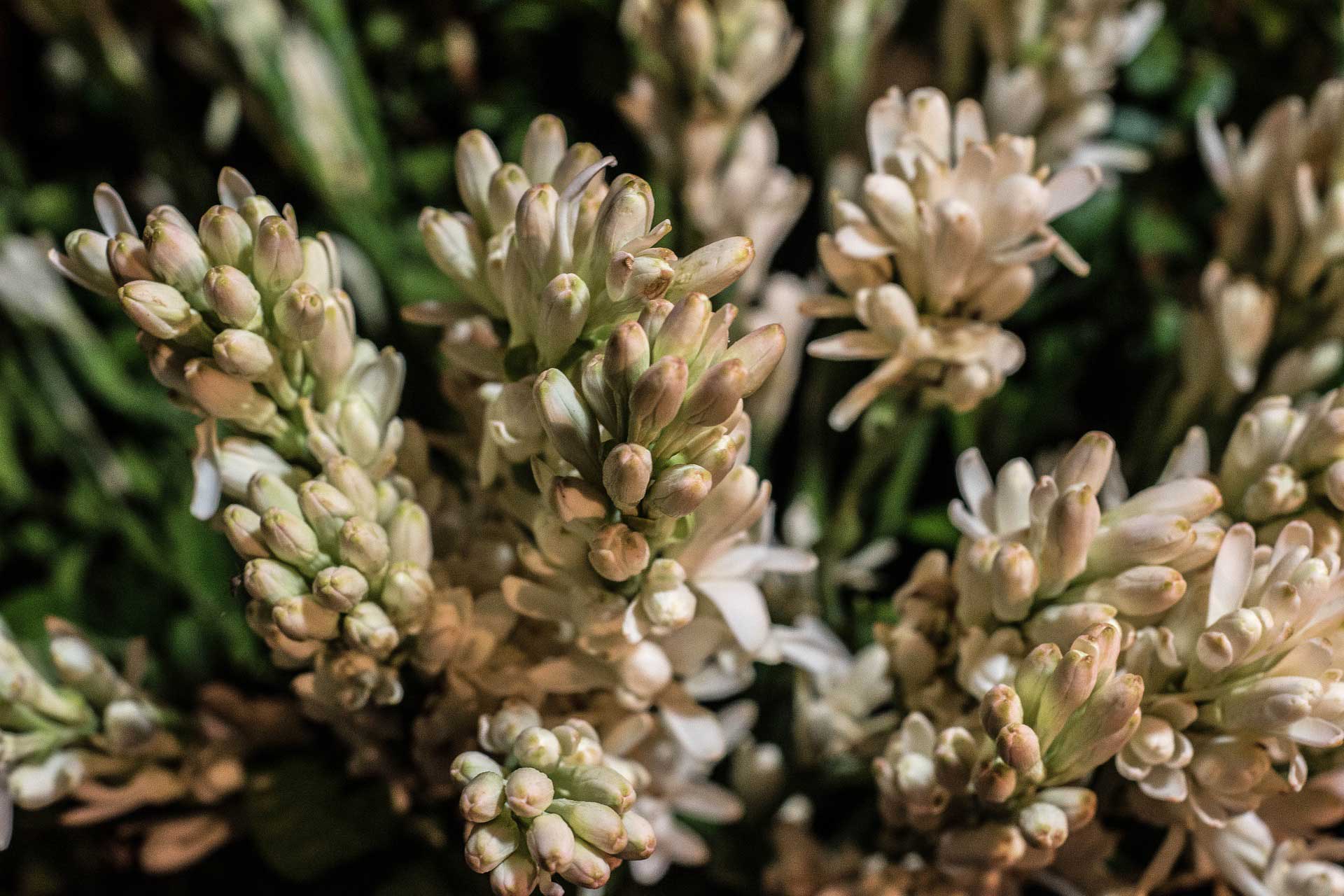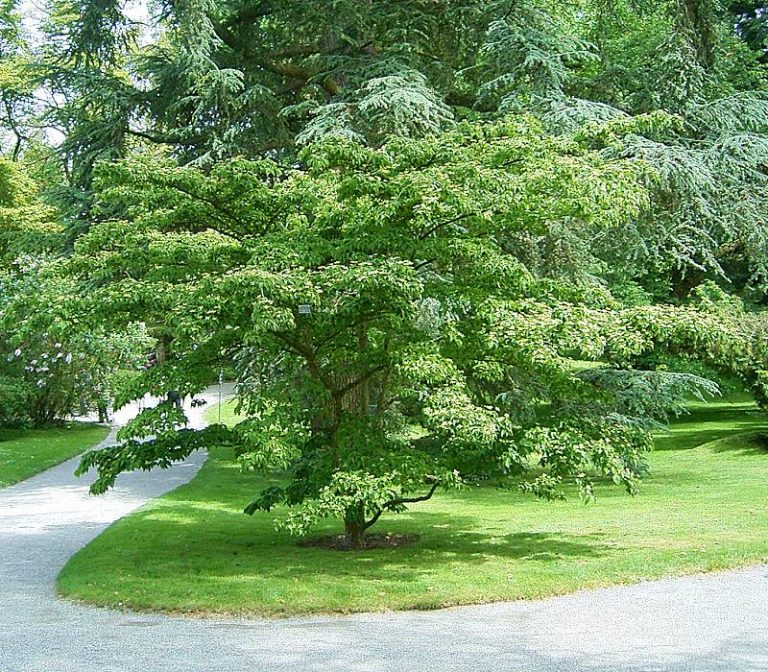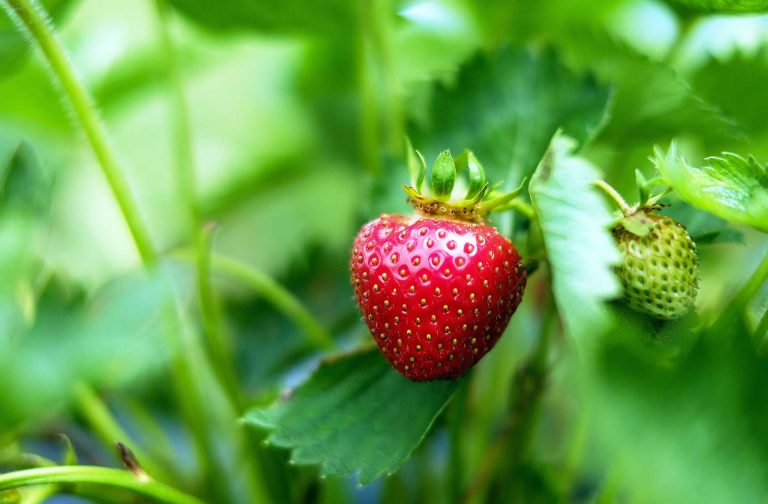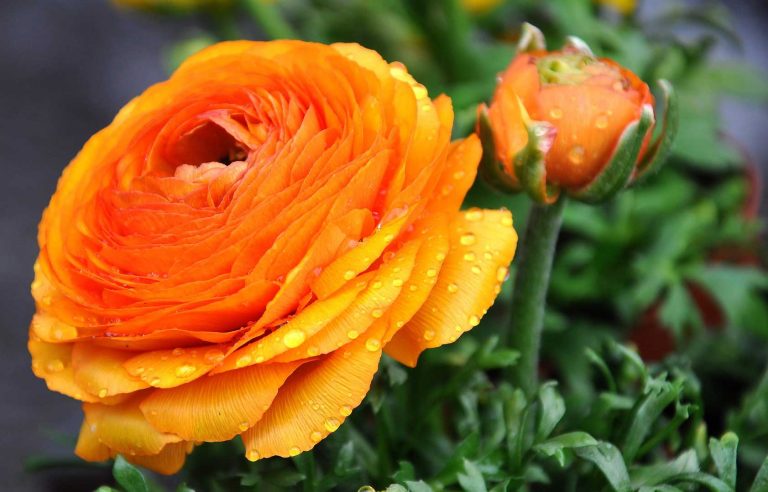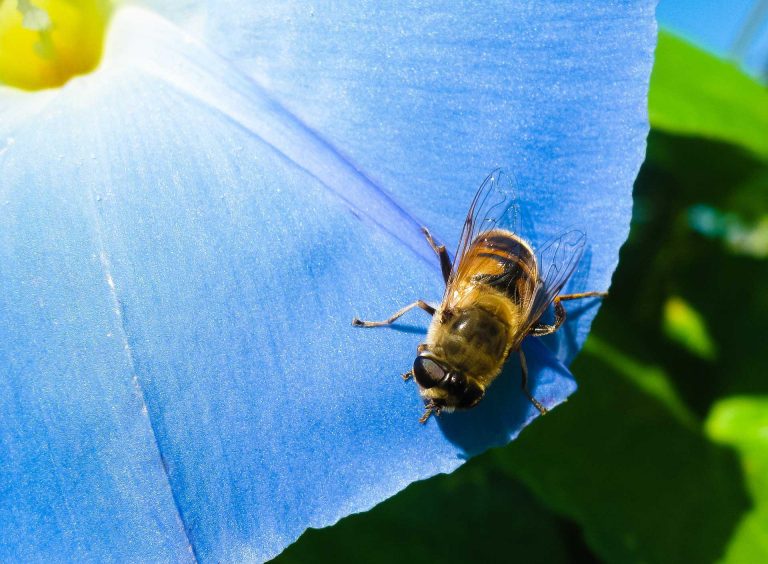Tuberose – History of Use in Religious Ceremonies Including Hawaiian Marriages
Scientific Classification
| Kingdom: | Plantae |
| Clade: | Angiosperms |
| Clade: | Monocots |
| Order: | Asparagales |
| Family: | Asparagaceae |
| Subfamily: | Agavoideae |
| Genus: | Polianthes |
| Species: | P. tuberosa |
This perennial plant tuberose also called Polianthes tuberosa, is closely associated with agaves. They have a strong pervading aroma and the extract of this plant is a chief ingredient in perfumes. Many people use this as a fragrant wedding flower. The name tuberose derives from the Latin word tuberose, which means swollen or tuberous. In Greek Polianthes means ‘many flowers’. In the Mexican Spanish language, they call the flower: vara de San Jose or Nardo that means “St. Joseph’s Staff.” The experts say that Tuberose inhabits Mexico along with the other varieties of Polianthes. Tuberoses have a history of use in religious ceremoneys including hawalian marriages.
Polianthes tuberosa flowers have featured heavily in many different types of religious ceremonies down the years. In traditional Hawaiian weddings.
Anatomy
Tuberose leaves resemble grass. In appearance they are akin to the day lilies. A single stem holds up to 12 or even more white flowers. In the scorching heat, you can see these flowers in the closed mode. As in agave, the blossoms have a mild coating of wax to shield them from aridity, but it is possible for the flowers to shrink and wrinkle in direct sunlight when the temperature exceeds 95°F.
How to Cultivate Domestically
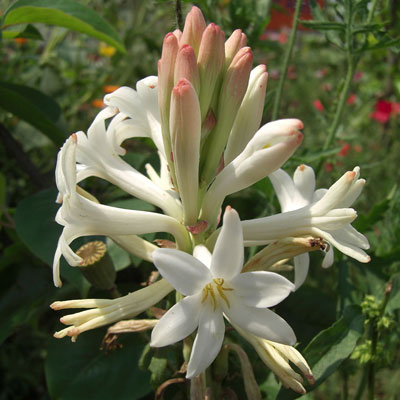
Photo by: Swami Stream
Preparation for Planting
Tuberose blooms only toward the end of August in the climates of the Northern zone. A good beginning is by planting the plants indoor towards the beginning of spring. On the other hand they bloom better outdoors provided you are ready to show patience, by waiting for three to four months for the initial bloom.
- Keep them in a sunny place in a properly drained soil.
- Separate the bulbs by a distance of six inches.
- Be certain that you water your bulbs either through rain or by irrigating it once a week.
Planting
- Search for a location with well drained soil and the moderate sunlight.
- Make minor alterations with the soil by adding organic compost or any other organic material. Such a system quickens the drainage and nourishes the soil—tuberoses are gluttons.
- In case you are planting your rhizome clusters in harsh conditions, plant the tuberose in a hole of depth 2 to 3 inches and separate them 8 to 20 inches from each other. In case you decide to plant them further north, plant the clusters a little deeper to almost four inches.
- When the plants emerge, mulch them, mulch conserves the moisture of the soil.
- Do not stop watering the plants till the leaves turn brown. Despite the flowers withering away water is further necessary for them to gather and store energy for the coming season.
Placement and Watering
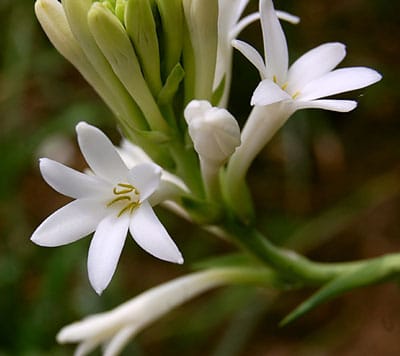
Photo by: Jayesh Patil
In case there is no rain, water your tuberose frequently as it grows. Bear in mind that a thorough once a week watering is far better than weak watering every other day. As a thumb rule, the plant needs 1 inch of water a week (both through rain and irrigation).
Flowering Period
Expose your tuberose in bright sunlight, partial shade in a sunny area is fine. The flowering period of tuberose is particularly 90 to 120 days after planting. When they start flowering you can ideally cut the stems for bouquet arrangements. This will not harm the plants, but will give the flowers extra fragrance.
After-Bloom Care
Once the season’s flowering is over, retain the leaves in its place; do not snip it off. The leaves accumulate sunlight and supply nutrients for next season. Water the plants when required. Remove the foliage when they turn yellow, late in the season, (in Zone 8 and cooler). To preserve your bulbs for the coming year, remove them with care once the first frost is over and leave them to dry in the air for many days.
As Cut Flowers
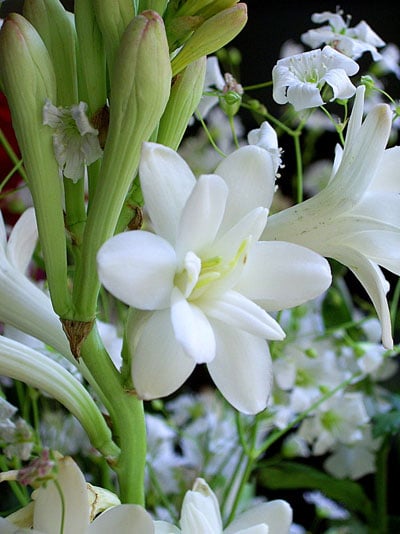
Photo by: Luis Fernando del Águila
The tuberose plant does not get affected when you remove the blooms for your home to enjoy the fragrance. When 2 to 3 flowers at the base of the stem are in full bloom, cut them for your vases. Remove the withered flowers from the peak of the stem to extend the life of the rest of the cut flowers.

Having discovered a fondness for insects while pursuing her degree in Biology, Randi Jones was quite bugged to know that people usually dismissed these little creatures as “creepy-crawlies”.

